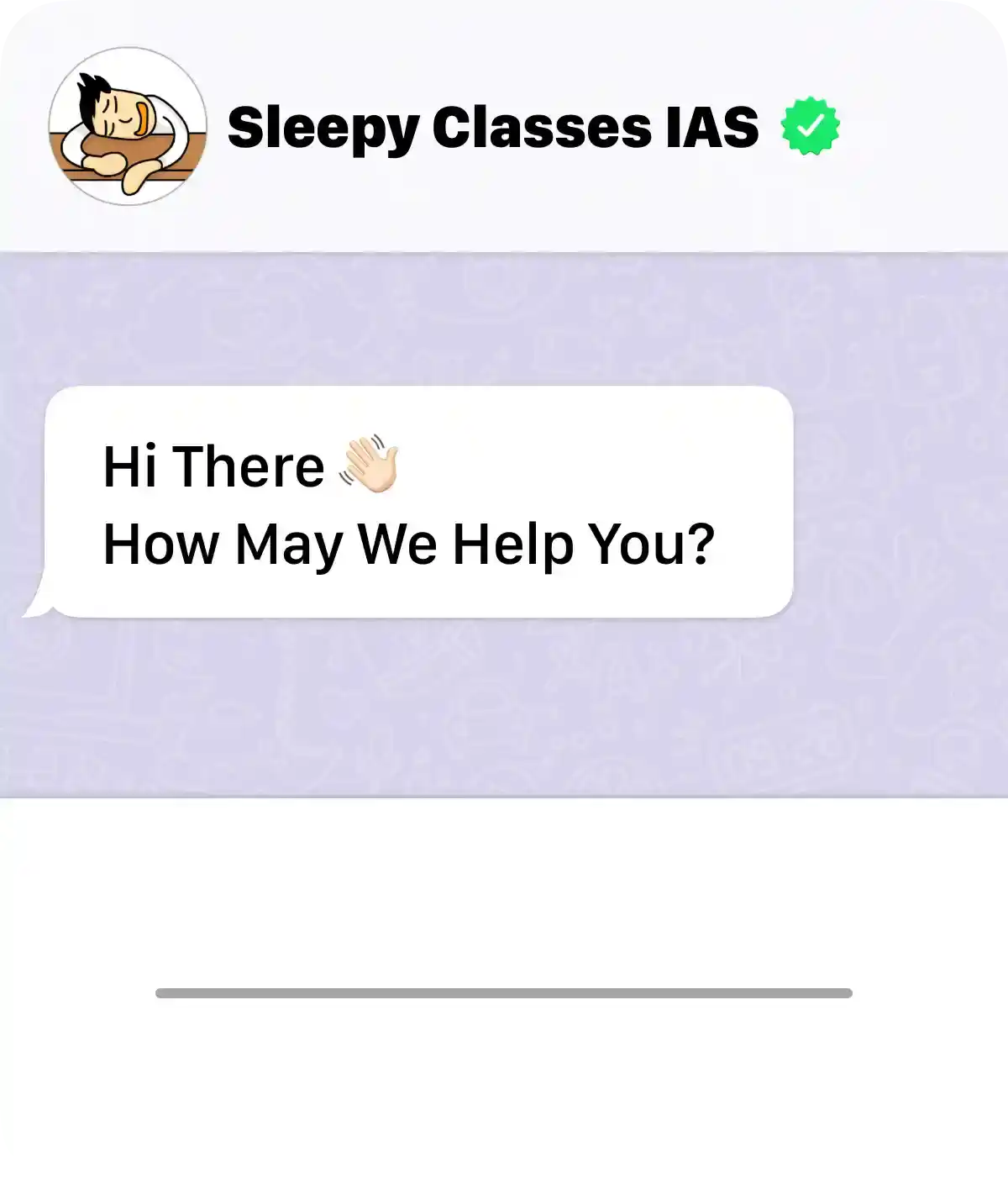The Annual Status of Education Report (ASER) is like a report card for India’s education system, especially for those in rural areas. It’s been around since 2005, giving us a peek at how kids are doing in school. Every year, it checks out how many kids are in school and how well they’re doing in reading and math. The ASER 2023 report is super important for anyone getting ready for the UPSC 2025 exams because it highlights the big trends and issues in education right now.
Key Takeaways
- ASER 2023 shows a rise in school enrollment, even after the pandemic disruptions.
- Reading and math skills among students are not as strong as they should be, showing a need for better teaching methods.
- The report highlights big differences in education quality between different regions in India.
- ASER 2023 has pushed for more community involvement and use of technology in schools to improve learning.
- For UPSC 2025 aspirants, understanding ASER trends is crucial for essays and interviews.
Understanding the Annual Status of Education Report (ASER)
Overview of ASER’s Objectives
The Annual Status of Education Report (ASER) is a key survey that has been illuminating the educational landscape in India since 2005. Managed by the Pratham Education Foundation, it primarily focuses on assessing the schooling status and basic learning levels of children across rural India. Unlike many other surveys, ASER is household-based, which means it captures data from all children, including those who have never attended school or have dropped out, as well as those in various types of schools. This approach provides a comprehensive view of educational attainment and challenges.
Historical Context and Evolution
ASER began as an initiative to fill the gap in data about educational outcomes in rural India. Over the years, it has expanded its scope and methodology, adapting to the changing educational needs and policy environments. Initially focusing on basic reading and arithmetic for children aged 6 to 14, the survey now includes older age groups and assesses additional skills like English proficiency and practical application of learned skills in daily life. This evolution reflects a broader understanding of education as a tool for real-world problem solving.
Significance for Policymakers
For policymakers, ASER provides invaluable insights into the state of education. The data collected helps in identifying areas that require urgent attention and aids in the formulation of targeted interventions. The survey’s findings are often used to influence national and state-level educational policies, ensuring that they are aligned with the actual needs of the population. Moreover, ASER’s methodology and findings have inspired similar educational assessments in other countries, showcasing its global impact.
Key Findings from ASER 2023
Trends in School Enrollment
The ASER 2023 report shows a noteworthy rise in school enrollment rates, especially among adolescents aged 14 to 18. A staggering 86.8% of teenagers in rural areas are now enrolled in educational institutions. This is a positive trend, reflecting a growing commitment to education despite economic hurdles. The report also highlights that more students are transitioning to secondary education, paving the way for higher educational attainment.
Reading and Arithmetic Proficiency
ASER 2023 reveals some concerning trends in basic skills. Nearly 43% of children in the 14-18 age group struggle with reading English sentences. In rural areas, about 25% find it difficult to read a Class 2 level text in their regional language. Arithmetic skills are also lagging, with many students unable to perform simple calculations. This proficiency gap underscores the need for focused interventions to improve foundational skills.
Regional Disparities in Education
The report uncovers significant regional disparities in educational outcomes. Some states show impressive enrollment and skill levels, while others lag behind. For instance, states like Kerala and Himachal Pradesh lead in literacy rates, whereas regions in Uttar Pradesh and Bihar face more challenges. These disparities highlight the importance of tailored educational policies to address specific regional needs.
The findings of ASER 2023 emphasize the critical need to focus on foundational skills in education, particularly in rural areas. Addressing these gaps can significantly impact the future of India’s youth, driving them towards better opportunities and growth.
Impact of ASER on Education Policy
Influence on National Education Policies
The Annual Status of Education Report (ASER) has been a game-changer for understanding the state of education in India. Its findings often serve as a wake-up call for policymakers. ASER’s insights have directly influenced the formulation of national policies, such as the National Education Policy (NEP), ensuring that foundational literacy and numeracy are prioritized. The data collected helps in identifying gaps and areas needing urgent attention, thereby shaping targeted interventions.
Role in Shaping State-Level Initiatives
ASER doesn’t just impact national policies; it also plays a crucial role at the state level. States use ASER data to tailor their educational programs to local needs. For instance, if a state finds that its students lag in reading proficiency, it can implement specific reading programs. This localized approach ensures that interventions are relevant and effective, addressing the unique challenges of each region.
ASER’s Contribution to Global Education Trends
Beyond India, ASER’s methodology has caught the attention of international bodies. Countries like Kenya and Uganda have adopted similar approaches to assess their educational systems. This has led to a broader acceptance of household-based surveys as a means to gather educational data, complementing large-scale international assessments like PISA and ASER. ASER’s influence extends globally, contributing to a better understanding of educational challenges and successes worldwide.
ASER’s role in shaping educational policies cannot be overstated. It provides a clear picture of what’s working and what’s not, allowing for data-driven decisions that can transform education systems.
Challenges Highlighted by ASER 2023
Foundational Skill Gaps
ASER 2023 shines a light on some serious gaps in foundational skills among students, especially in rural areas. A staggering 43% of kids aged 14-18 can’t read simple English sentences. In rural zones, a quarter of them struggle with reading texts meant for second graders. This highlights a major issue: kids are moving through the school system without grasping basic skills. It’s not just about literacy; arithmetic skills are lagging too, with many students unable to perform basic calculations essential for daily life.
Barriers to Secondary Education
While more kids are sticking around in school longer, getting past primary education isn’t a walk in the park. Economic hardships, long distances to schools, and cultural factors often stand in the way. Girls, in particular, face unique challenges due to societal norms and expectations. These barriers prevent many from continuing their education beyond the basics, which in turn limits their future opportunities.
Impact of Socioeconomic Factors
Socioeconomic status plays a huge role in educational outcomes. Kids from low-income families often lack access to resources like books, internet, and tutoring. This isn’t just about money—it’s about the environment too. Schools in poorer areas are often underfunded, lacking in basic infrastructure and quality teachers. The gap between the haves and the have-nots is growing, and it’s becoming increasingly difficult for kids from disadvantaged backgrounds to catch up.
Education is supposed to be the great equalizer, but these challenges show it’s not quite there yet. Addressing these issues requires a concerted effort from policymakers, communities, and educators alike to ensure every child has the chance to succeed.
Innovative Solutions Proposed by ASER
Community Involvement in Schools
ASER has consistently highlighted the importance of community engagement in the educational process. By involving local communities, schools can create a more supportive learning environment. This can be achieved through initiatives like community libraries, which not only provide access to reading materials but also foster a culture of learning. Community participation ensures that educational resources are utilized effectively, and it encourages a sense of ownership and responsibility among community members.
Use of Technology in Education
Technology is becoming a game-changer in the educational landscape. ASER suggests integrating digital tools to enhance learning experiences, especially in rural areas where access to quality education is limited. By leveraging technology, schools can offer interactive and engaging learning modules, making education more accessible and inclusive. This approach not only aids in bridging the digital divide but also prepares students for a tech-driven world.
Enhancing Teacher Training Programs
Teachers are the backbone of any educational system, and enhancing their skills is crucial. ASER advocates for comprehensive teacher training programs that equip educators with modern teaching methodologies. These programs should focus on practical skills, such as classroom management and student engagement techniques. By investing in teacher training, schools can ensure that educators are well-prepared to meet the diverse needs of their students.
“Innovation in education is not just about introducing new tools or methods. It’s about rethinking the way we approach learning and teaching, ensuring that every child has the opportunity to succeed.”
ASER’s Role in UPSC Preparation
Relevance to UPSC Syllabus
The Annual Status of Education Report (ASER) is a goldmine for UPSC aspirants. It offers insights into educational trends that are crucial for understanding India’s socio-economic landscape. UPSC’s syllabus often includes topics directly related to education and development, making ASER reports a valuable resource. They provide real-world data that enriches answers in both Prelims and Mains, especially in General Studies papers.
Incorporating ASER Data in Essays
Writing essays for the UPSC exam demands a blend of factual information and analytical skills. ASER reports provide credible statistics that can be used to substantiate arguments. Here’s how you can incorporate ASER data effectively:
- Start with a strong introduction that highlights the importance of education.
- Use ASER statistics to support your points about current educational challenges.
- Conclude with suggestions for improvement, backed by data.
Analyzing ASER Trends for Mains
For the Mains exam, understanding trends is key. ASER reports help candidates analyze shifts in education over time. This analysis can be applied to questions on policy impacts or socio-economic issues. By examining ASER trends, candidates can:
- Identify gaps in educational policies.
- Discuss the implications of regional disparities in education.
- Suggest policy measures based on data-driven insights.
The ASER report is not just about numbers; it’s a reflection of India’s educational journey. For UPSC aspirants, it offers a pathway to connect theoretical knowledge with practical realities.
Incorporating ASER insights can give your answers an edge, making them more comprehensive and grounded in reality. It’s not just about knowing the data but understanding its implications on a broader scale, which is what UPSC exams truly assess.
Comparative Analysis: ASER and Other Educational Reports
Differences in Methodology
The Annual Status of Education Report (ASER) and other educational reports, like the National Achievement Survey (NAS), have unique approaches. ASER is community-driven, focusing on households and covering a wide age range from 3 to 16 years, which includes children who might not be in school. This makes it quite inclusive. On the other hand, NAS is school-based, assessing specific grades and mainly government schools. This difference in methodology means ASER can capture a broader picture of basic competencies, while NAS offers detailed insights into school performance.
Unique Insights Offered by ASER
ASER’s household-based approach provides insights into the educational environment at home, which is crucial for understanding learning outcomes. It highlights issues like the availability of reading materials at home, which can be a significant barrier to learning. The report also sheds light on the role of community libraries and how they can be a game-changer in rural areas by fostering a love for reading and learning outside school.
Global Comparisons and Lessons
ASER’s model has been adopted in several countries, including Kenya, Uganda, and Pakistan, showcasing its global relevance. It offers a simple yet effective way to gauge basic educational outcomes, which can be adapted to different contexts. This adaptability makes ASER a valuable tool for countries looking to improve their educational assessments without the need for complex infrastructure. By comparing ASER with other reports, countries can learn how community involvement can enhance educational data collection and interpretation.
Future Directions for ASER
ASER has been a game-changer in understanding educational trends, but there’s room to grow. One way forward is by broadening the survey’s reach. This could mean including more diverse age groups or even urban areas, which have been somewhat overlooked. By doing so, ASER can provide a more comprehensive picture of India’s educational landscape.
Integrating New Educational Metrics
To stay relevant, ASER could consider incorporating new metrics that reflect the changing educational environment. This might include digital literacy, critical thinking skills, or even emotional intelligence. By measuring these, ASER can offer insights that are more aligned with today’s educational needs.
Collaborations with International Bodies
Partnering with global educational organizations could be a significant step for ASER. Such collaborations can help bring in new perspectives and methodologies, enhancing the report’s depth and applicability. This could also position ASER as a model for similar surveys worldwide.
ASER’s future looks promising, with potential expansions and innovations on the horizon. By embracing these changes, it can continue to be a vital tool for understanding and improving education in India.
Case Studies: Success Stories from ASER Data
Improved Literacy Rates in Rural Areas
The Annual Status of Education Report (ASER) has been instrumental in boosting literacy rates, especially in rural parts of India. By identifying key gaps in basic reading and arithmetic skills, local initiatives have been tailored to address these issues effectively. Community libraries have been set up, providing children with access to a variety of reading materials beyond just textbooks. This has sparked a renewed interest in reading among young learners, leading to noticeable improvements in literacy levels.
Successful Policy Interventions
ASER data has played a pivotal role in shaping effective educational policies. For instance, the focus on foundational skills has led to the implementation of targeted programs aimed at enhancing reading and math proficiency among students. These initiatives have not only improved academic outcomes but have also increased school enrollment and retention rates. Policymakers have used ASER findings to allocate resources more efficiently, ensuring that interventions reach the most underserved communities.
Community-Led Educational Initiatives
In various regions, community involvement has been a game-changer in education. By leveraging ASER insights, local leaders have mobilized resources to support schools and students. Efforts such as volunteer-led tutoring sessions and parental engagement workshops have fostered a supportive learning environment. These grassroots movements have empowered communities to take charge of their educational futures, resulting in higher student engagement and better academic performance.
The stories emerging from ASER data highlight the power of community-driven change. When local stakeholders come together with a common goal of improving education, the results can be transformative. These case studies serve as a testament to the impact of collective action in driving educational success.
ASER and the Digital Education Revolution
Adapting to Online Learning Environments
In recent years, the shift to online learning has become more pronounced, especially highlighted by the findings of ASER 2023. The report underscores the critical role of digital platforms in bridging educational gaps. Many students, particularly in rural areas, have gained access to online resources, making learning more flexible and accessible. However, challenges remain, such as inconsistent internet connectivity and a lack of digital literacy among students and teachers.
Digital Tools for Data Collection
ASER has increasingly utilized digital tools to collect and analyze data efficiently. These tools not only speed up the data collection process but also improve accuracy. With smartphones and tablets becoming more widespread, volunteers can now gather information in real-time, making the data more relevant and timely. This approach also allows for a more dynamic interaction with the collected data, enabling quicker responses to emerging educational trends.
Challenges in Digital Literacy
While digital platforms present numerous opportunities, the ASER 2023 report also highlights significant hurdles in digital literacy. Many students and educators lack the necessary skills to effectively use digital tools for learning and teaching. This gap is particularly evident in rural areas where access to technology is limited. Addressing these issues requires targeted training programs and infrastructure development to ensure that everyone can benefit from the digital education revolution.
The digital education revolution, as chronicled by ASER, is a double-edged sword. While it opens doors to new learning opportunities, it also exposes the stark digital divide that still exists, especially in rural communities. Bridging this gap is essential for achieving equitable educational outcomes.
The Role of ASER in Promoting Educational Equity
Addressing Gender Disparities
ASER has been pivotal in highlighting gender disparities in education. By shedding light on the enrollment and learning outcomes of boys and girls, ASER provides critical data that can guide policy interventions. The report often reveals that girls, particularly in rural areas, lag in educational attainment. This has prompted initiatives aimed at supporting girl-child education and ensuring equal opportunities for both genders. Education is a transformative tool for promoting gender equality in India, and ASER’s data is instrumental in shaping policies that aim to bridge these gaps.
Focus on Marginalized Communities
ASER’s focus on marginalized communities is crucial. The survey’s broad coverage ensures that the educational challenges faced by these groups are not overlooked. By providing detailed insights into the educational status of various communities, ASER helps in crafting targeted interventions. These interventions aim to uplift communities that have historically been underserved, ensuring that no child is left behind.
Strategies for Inclusive Education
ASER advocates for inclusive education strategies that cater to diverse learning needs. This includes promoting community involvement in schools, which fosters a supportive learning environment. The report also highlights the importance of using technology to enhance learning, making education more accessible to all. Furthermore, enhancing teacher training programs is emphasized to equip educators with the skills needed to address the varied needs of their students.
The role of ASER in promoting educational equity cannot be overstated. By providing a clear picture of the educational landscape, it enables policymakers to make informed decisions that aim to create a more equitable education system for all children.
ASER’s Influence on Global Education Policies
Adoption of ASER Standards Internationally
The Annual Status of Education Report (ASER) has not just been a game-changer in India but has also made waves internationally. Its straightforward approach to assessing basic reading and arithmetic skills has been adopted in countries like Kenya, Uganda, and Pakistan. These countries have found ASER’s model effective in providing a clear picture of educational outcomes at the grassroots level, which has helped them tailor their educational strategies more effectively.
Collaborations with Global Education Organizations
ASER’s methodology and findings have sparked interest among various global education bodies. Collaborations have been initiated to explore how ASER’s grassroots-level insights can be integrated into broader educational frameworks. For instance, ACER India is working with UNICEF Kyrgyzstan to evaluate educational projects, demonstrating how ASER’s principles can be applied in diverse contexts to address educational challenges.
Impact on International Educational Assessments
The influence of ASER extends to how international educational assessments are perceived and conducted. By focusing on basic educational competencies, ASER has prompted a re-evaluation of what is deemed important in educational assessments globally. This has led to a shift towards more inclusive and comprehensive evaluation techniques that consider the varied educational landscapes across different countries.
ASER’s impact on global education policies highlights the importance of adaptable and context-sensitive assessment tools. Its success underscores the potential of community-driven data collection in shaping effective education policies worldwide.
ASER has played a big role in shaping education rules around the world. Its findings help countries understand what works best for students and how to improve learning. If you want to learn more about how ASER is changing education, visit our website for more insights and resources!
Conclusion
Wrapping up, the Annual Status of Education Report (ASER) sheds light on the current educational trends and challenges in India. It’s clear that while there’s been progress, especially in enrollment rates, there’s still a long way to go in terms of improving foundational skills among students. The report highlights the importance of targeted interventions and community involvement to bridge these gaps. As we look towards the future, it’s crucial to address these educational shortcomings to ensure that the youth are well-equipped to contribute to the nation’s growth. For those preparing for the UPSC exams, understanding these trends is vital, and resources like Sleepy Classes can provide valuable support in navigating the complexities of the syllabus.
Frequently Asked Questions
What is the ASER report?
The Annual Status of Education Report (ASER) is a survey that checks how well children in rural India are learning. It looks at things like reading and math skills.
Why is ASER important for education?
ASER helps us understand what kids are learning in school. It shows areas where students are doing well and where they need more help. This helps teachers and the government make better plans for education.
How often is the ASER report published?
The ASER report is usually published every year. It has been happening since 2005, except for a few years during the COVID-19 pandemic.
Who conducts the ASER survey?
The ASER survey is conducted by the Pratham Education Foundation, an organization that works to improve education in India.
What age group does ASER focus on?
ASER focuses on children aged 6 to 14 years old, checking their enrollment in school and their basic learning skills like reading and math.
How does ASER help with UPSC preparation?
ASER data can be used for UPSC exam preparation, especially in writing essays and answering questions about education policies and trends in India.
What are some challenges highlighted by ASER?
ASER often points out challenges like gaps in basic skills, differences in education quality between regions, and the impact of economic factors on education.
How can technology improve education according to ASER?
ASER suggests using technology like online learning tools and interactive apps to help students learn better and make education more accessible.





